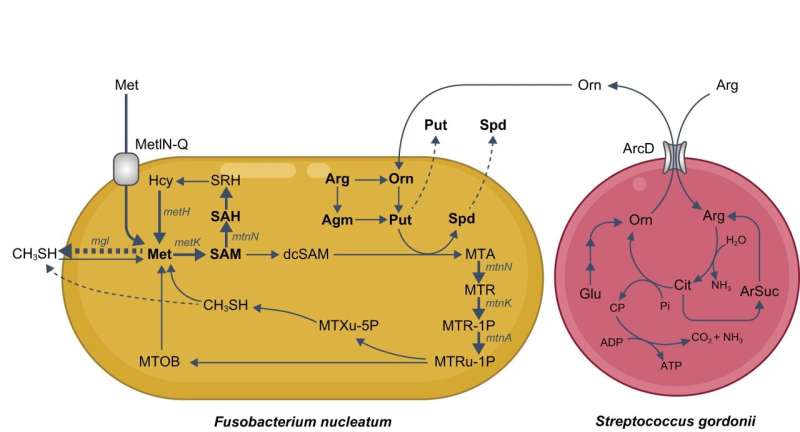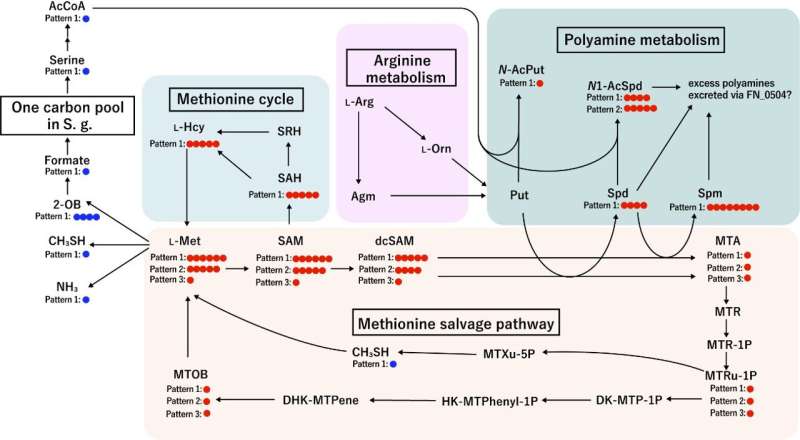Schematic representation of observed metabolic flow of bacterial metabolism F. nucleatum and S. gordonii cocultures. Credit: mSystems (2024). DOI: 10.1128/msystems.00764-23
In a study published last month in mSystems, researchers from Osaka University revealed that the interaction between two common types of oral bacteria leads to the production of a chemical compound that is a major cause of smelly breath.
Bad breath is caused by volatile compounds that are produced when bacteria in the mouth digest substances like blood and food particles. One of the smelliest of these compounds is methyl mercaptan (CH3SH), which is produced by microbes that live around the teeth and on the surface of the tongue. However, little is known about which specific bacterial species are involved in this process.
"Most previous studies investigating CH3SH-producing oral bacteria have used isolated enzymes or relatively small culture volumes," explains lead author of the study Takeshi Hara. "In this study, we aimed to create a more realistic environment in which to investigate CH3SH production by major oral bacteria."
To do this, the researchers developed a large-volume anaerobic co-culture system that enabled them to test interactions between multiple different types of bacteria that live in the mouth. This system was able to test both direct, physical interactions among the bacteria, as well as whether these species could affect each other from a distance, for example by secreting active substances.
Predicted flux profiling of methionine metabolic pathways in F. nucleatum. Credit: mSystems (2024). DOI: 10.1128/msystems.00764-23
"The results were very intriguing," says Masae Kuboniwa, senior author. "We found that Fusobacterium nucleatum produces large quantities of CH3SH in response to Streptococcus gordonii, another oral bacterium."
By using stable isotope tracers and analyzing gene expression, the researchers showed that S. gordonii releases a substance called ornithine that prompts F. nucleatum to produce more of a molecule called polyamine. Because F. nucleatum needs methionine to produce polyamine, this enhanced polyamine production activates its methionine salvage pathway, which in turn results in increased CH3SH production.
"Taken together, these findings suggest that CH3SH production in the mouth is driven by the interaction between S. gordonii and F. nucleatum," says Hara.
Understanding how these two bacterial species work together to cause bad breath could be helpful in developing ways to treat or even prevent bad breath. In addition, given that bad breath is often associated with periodontal disease, treating this symptom early could help prevent more serious damage in the future.
More information: Takeshi Hara et al, Interspecies metabolite transfer fuels the methionine metabolism of Fusobacterium nucleatum to stimulate volatile methyl mercaptan production, mSystems (2024). DOI: 10.1128/msystems.00764-23
Provided by Osaka University

























